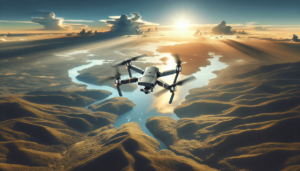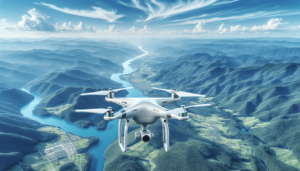Have you ever wondered how certain real estate listings instantly capture your attention while others seem to fade into obscurity? Perhaps it’s because those captivating listings have mastered the art of aerial photography. Using aerial photography for real estate can significantly boost the appeal and allure of properties, making them sell faster. By granting a bird’s eye view, potential buyers gain a comprehensive understanding of the property and its surroundings. But how can we make the most of this incredible tool? Let’s explore some tried-and-true tips to elevate our real estate listings, quite literally!
Understanding the Importance of Aerial Photography
Aerial photography isn’t just a trendy addition to real estate marketing; it’s become a staple for successful property listings. With a unique vantage point, aerial shots can highlight aspects of a property that traditional photos can’t. They showcase the property’s proximity to amenities, emphasize scenic views, and reveal the full extent of the land.
Why Aerial Views Matter
In our digital age, first impressions often happen on a screen. For real estate, that first impression might be an aerial photo showing off a property’s expansive yard or its scenic environment. These images provide a story about a neighborhood’s charm, accessibility to schools, parks, and other attractions, enhancing the buyer’s experience.
The Psychological Impact
Aerial imagery impacts buyers psychologically. Viewing a property from above can create a sense of openness and space, qualities that resonate with potential homeowners seeking freedom and a feeling of well-being. It’s almost as though they can visualize themselves living there before they even step foot inside.
Selecting the Right Equipment
To capture those stunning vistas, we need the right equipment. The choice of a drone or camera can make or break our photography efforts. It’s about precision, image quality, and user-friendliness.
Drone vs. Helicopter
Let’s face it, not all of us have helicopters at our disposal. Drones, on the other hand, provide an accessible alternative. Drones are cost-effective, can get closer to properties, and are much easier to maneuver than helicopters.
Essential Features in Drones
When selecting a drone, consider factors like camera quality, flight stability, and battery life. A drone with a high-resolution camera and a gimbal for stabilization will ensure we get the clearest, most professional-looking images.
A quick comparison:
| Feature | Essential Specification |
|---|---|
| Camera Quality | At least 4K for high clarity |
| Flight Stability | Gimbals for smooth filming |
| Battery Life | Minimum 20-minute flight time |

Planning Your Shoot
Planning is as vital as the shoot itself. It ensures we maximize the light and weather conditions to capture the best shots possible.
Timing is Everything
Lighting can dramatically affect our images. Shooting during the “golden hour”—the first hour after sunrise and the last hour before sunset—provides soft lighting that’s ideal for property photography. No harsh shadows, just a warm, inviting glow.
Weather Considerations
Mother Nature can be tricky. Wind can ruin a drone flight and rain can obscure visibility. Always check the weather forecast and plan accordingly. Clear skies and mild winds are our best bet.
Mastering the Shot Composition
Good composition is the heart of great aerial photography. Understanding this art can enhance how potential buyers perceive a property.
Rule of Thirds
A well-composed shot leads to a well-communicated story. Applying the rule of thirds can help us frame the property more appealingly. This involves dividing our image into a 3×3 grid and positioning the property along these lines or intersections for balance.
Angles and Perspectives
Experimenting with angles can reveal unique features of a property. An oblique angle can provide both the birds-eye view of the property and the landscape it sits in, offering a balanced depiction of its surroundings.

Editing for Excellence
Once we’ve captured the shots, it’s time to perfect them. Editing can transform a good image into a great one, ensuring it looks professional and polished.
Choosing Software
There are several editing software options, such as Photoshop or Lightroom, that cater to different levels of expertise. These tools allow us to adjust brightness, contrast, saturation, and sharpness to bring out the best in our photos.
Enhancing Key Elements
Editing shouldn’t alter reality but should enhance the property’s natural beauty. Adjust colors to reflect the true ambiance and fix any distortions from wide angles to ensure the home looks realistic and appealing.
Legal Considerations and FAA Regulations
Flying a drone isn’t as simple as just taking off into the sky. There are rules and regulations to follow to ensure everyone’s safety and legal compliance.
Registering Drones
If we’re using a drone that weighs over 250 grams, we need to register with the FAA. It’s a small step that ensures we’re flying legally.
Obtaining a Commercial License
Using a drone for real estate means commercial use, which requires a Part 107 license. This involves passing a knowledge test covering airspace rules, weather effects, and drone operation regulations.
Highlighting Unique Property Features
Every property has something special, whether it’s a lush garden, a lakeside view, or a grand driveway. Aerial photography is perfect for highlighting these aspects.
Focusing on Land Layout
A well-shot aerial image can show the layout of the yard, the position of outbuildings, and any appealing landscape features that are part of the deal. It helps buyers visualize the entire property in one glance.
Showcasing Surroundings
Proximity to desirable locations can be a major selling point. Aerial shots can emphasize a property’s closeness to beaches, parks, schools, or shopping areas, making it even more enticing.
Selling the Lifestyle, Not Just the Home
One of the most powerful aspects of real estate marketing is selling not just a house, but a lifestyle. Aerial photography can encapsulate the entire living experience.
Creating Emotional Connections
People buy with their hearts, and aerial images can tap into that emotion. Whether it’s the stunning sunrise over the mountains or a vibrant neighborhood, these photos can make potential buyers fall in love with the lifestyle they see.
Envisioning Future Possibilities
Beyond showing what’s there now, aerial photography can hint at what could be. Potential for extensions, outdoor entertainment spaces, or future developments are things we can illustrate from above, sparking buyers’ imaginations.
Continuously Improving Our Skills
Like any other skill, aerial photography gets better with practice and by learning from others in the field.
Learning from the Best
There is a wealth of information available, from online courses to workshops by experienced photographers. Engaging with a community can provide insights and tips that can drastically improve our techniques.
Analyzing Feedback
Constructive feedback is gold. Whether it’s from clients, colleagues, or online communities, it helps us identify areas of improvement. By being open to critique, we refine our skills and deliver even better results.
In conclusion, mastering aerial photography for real estate is as much about preparation and understanding as it is about shooting stunning images. From selecting the right equipment to editing the final shots and adhering to legal guidelines, every step is crucial. The key lies in conveying a sense of lifestyle and potential that invites buyers to see beyond the photographs and into their future lives in the property. With these insights, we’re ready to capture real estate listings that not only turn heads but also close deals faster than ever before.
![7 Essential Aerial Photography Tips For Beginners [2025]](https://droneaperture.com/wp-content/uploads/2025/01/7-essential-aerial-photography-tips-for-beginners-2025-1-300x171.png)

